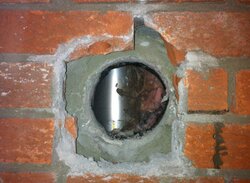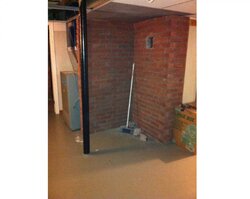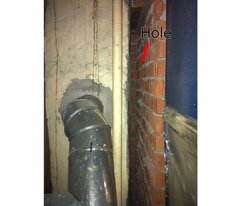Hi everyone,
First of all, thanks for reading my first thread. I am a new (first time) home owner and this is going to be my first wood burning stove (that I own).
My questions and concerns are these:
Masonry/concrete chimney with existing hole for wood stove. It's 7" in diameter.

There is a newer oil furnace that is currently hooked up (not shown) adjacent to this hole to the left. I am looking to disconnect the furnace and install a wood stove in the hole shown above.
I guess what I really need to know is... Can I just cut a hole into the liner, insert the stove pipe, and seal it up with stove cement?
I have done a lot of research online about this type of installation and all I can seem to find are people that are installing wood stoves at the base of a fireplace, installing wood stoves into a chimney with a clay liner, or people installing stoves with there own steel chimneys that run along side of the house.
So with that said, am I ok? Please forgive me if I have already made 101 beginner mistakes... I'm new, but I learn fast. Thanks everyone.
First of all, thanks for reading my first thread. I am a new (first time) home owner and this is going to be my first wood burning stove (that I own).
My questions and concerns are these:
Masonry/concrete chimney with existing hole for wood stove. It's 7" in diameter.

There is a newer oil furnace that is currently hooked up (not shown) adjacent to this hole to the left. I am looking to disconnect the furnace and install a wood stove in the hole shown above.
I guess what I really need to know is... Can I just cut a hole into the liner, insert the stove pipe, and seal it up with stove cement?
I have done a lot of research online about this type of installation and all I can seem to find are people that are installing wood stoves at the base of a fireplace, installing wood stoves into a chimney with a clay liner, or people installing stoves with there own steel chimneys that run along side of the house.
So with that said, am I ok? Please forgive me if I have already made 101 beginner mistakes... I'm new, but I learn fast. Thanks everyone.




